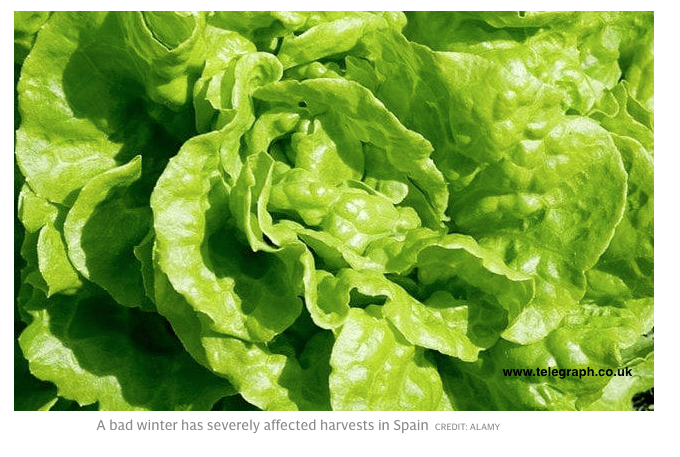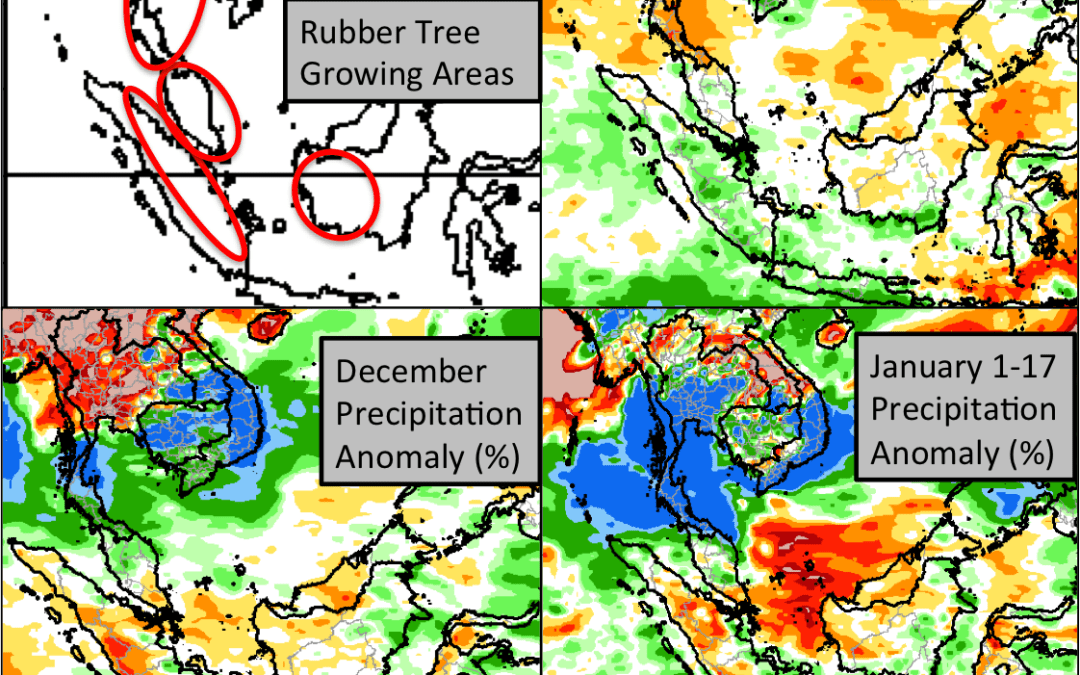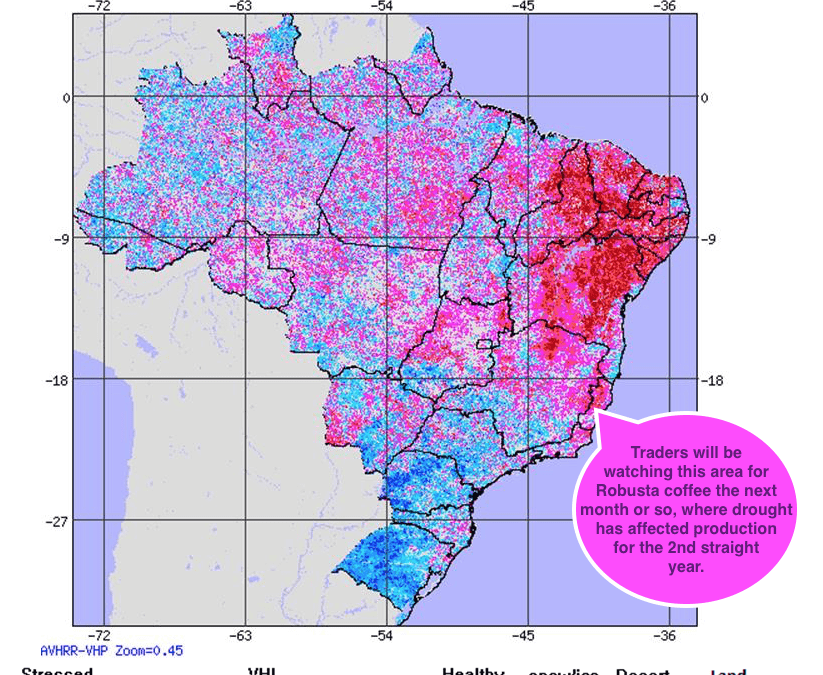
BLOOMBERG RADIO—HAVE WHEAT PRICES BOTTOMED, GLOBAL MARKETS AND LA NINA
Listen to Jim Roemer on Bloomberg Radio 11-23-2017

Listen to Jim Roemer on Bloomberg Radio 11-23-2017


Commentary and analysis of hurricanes Harvey and Irma have dominated the financial airwaves lately. The pundits and pontificates projected their opinions of storm impacts on many markets. As we do with our weather forecasts, it is sometimes prudent to examine prior events for information that helps to predict the future. We have done this numerous times with respect to the energy and soft commodity markets. Gasoline, cotton and orange juice, to name only a few, have had incredible moves up and down. There have been several research pieces and news articles that took a crack at trying to predict the equity and even bond and gold price reactions based on historical hurricane “market analogs.”
MarketWatch had a nice article (written by Simon Maierhofer of iSPYETF) on costly hurricanes and the S&P 500. They found that most storms did not occur during inflection points, leading to price reversals. Those that did were likely for other reasons (i.e. Ike 2008–>financial crisis, Allison 2000–> Tech bubble). Although we mentioned how certain stocks and sectors may react, it seems, overall, as if the market trend remains uninterrupted.
One of the biggest hurricane related moves ever observed in the bond market was after Andrew in 1992. Insurance companies were forced to raise cash in order to cover the damage to, and destruction of, coastal real estate in Florida. As a result, short term bond yields soared. The situation with Andrew was far worse than it is with Irma. Irma weakened when it hit Cuba and never fully regained its entire strength. After Andrew, insurance company stocks such as State Farm, Nationwide, etc. saw a hit of about 4-10% in their prices. However, this sell-off was short lived as many of these larger insurers benefited from raising premiums and also “gobbling up” the smaller insurers that went out of business.
A recent great article was written by John R. Mousseau, CFA & Gabriel Hament of Cumberland Advisors. They took an in-depth look at 12 of the most destructive hurricanes going back to 1989. Here is a crucial table excerpted from their research. (We added red boxes to highlight yield increases.)
SOURCE: BLOOMBERG, CUMBERLAND ADVISORS
“We observe RISING yields, particularly in the Treasury area, after eight out of twelve storms and the last six storms in a row. We think that points to overall better insurance coverage as well as quicker response by Federal agencies with relief dollars. This response translates, of course, into a higher level of economic activity in the years after a storm, and the bond markets perceive a potentially higher level of inflation.“–Cumberland Advisors
I suggest anyone interested in learning about the bond market to contact Cumberland Advisors. I have known them for years; and I feel they are some of the smartest and most ethical people in the investment industry. It is one of the finest companies in the field. Please visit their web site at www.cumber.com.
With interest rates very low for years now, more investors are seeking yields but ditching U.S. Treasury bonds. While yields have come up a bit, it is possible that recent hurricane activity (and maybe more to come) might cause the Federal Reserve to delay unwinding their balance sheet. This could mean more sudden interest rate rises are put on hold, as the U.S. has seen no less than $150 billion of damage from Irma and Harvey.
Consequently, an investor could offset low bond yields by purchasing assets that are “uncorrelated” such as commodities. However, some wealthier, and more conservative, individuals have been investing in catastrophe bonds. These CAT BONDS are essentially slices of reinsurance risk assets. These unique instruments can provide decent yields during a low yield environment. For more information about CAT BONDS, please go here:
http://www.investopedia.com/terms/c/catastrophebond.asp
In addition, there are still plenty of investment opportunities in municipal bonds, and as I mentioned above, CUMBERLAND ADVISORS has outstanding capabilities to handle your investment needs in this regard. As the fall winds blow and hurricanes continue to pop up, they can help you “weather any financial storm” that may or may not occur, and navigate your portfolio with conservative, well thought out investment strategies. -Jim Roemer
For more information contact them at:

The National Hurricane Center is currently eyeing three tropical waves in the eastern Atlantic. These systems will bear watching over the next week to ten days as they all have a 60% chance of forming. This far out, it is tough to give any concrete forecast until the picture becomes more clear. Recent model runs show all types of scenarios including storms going out to sea, making landfall, and storms completely dissipating.
We’ve done some research into the number of storms expected in August, September and October. Matching most other forecasts, we expect above normal activity through the end of this season. There are two key ocean features that support increased cyclogenesis compared to recent years. Warmer than normal sea surface temperatures in the Atlantic create more instability and allow for more water vapor to be drawn into a developing cluster of tropical thunderstorms. See the favorable anomalies in orange in the image below (the main development region–just west of Africa–as well as the Caribbean and the Gulf of Mexico).
The other recent change that favors storm formation is the weakening of El Nino. When El Nino conditions are present, it tends to increase vertical wind shear in the Atlantic. Hurricanes thrive when they are stacked like a multi-layer cake, rather than the Tower of Pisa. The shear can shred and separate the storm, leading to its demise. Since sea surface temperatures in the equatorial Pacific are cooling, this should limit wind shear and allow storms to develop.
Going all the way back to 2005, we saw natural gas prices increase significantly every time a hurricane (Wilma, Katrina, etc.) entered the Gulf of Mexico. However, shale production was not anywhere close to the levels we have now. Therefore, it is unlikely that a “major” impact to supply/demand would occur if a strong hurricane were to enter the Gulf of Mexico and limit production. Hurricanes also impact other markets. The home improvement stocks have bumped up slightly during previous landfalling hurricanes. Traders expect an increase in earnings on plywood and other storm/recovery supplies. Some other stocks to watch would be in the insurance, electric (GRNC) and shipping industries.
For all our research on the 2017 hurricane season, email us at subscriptionsbestweather@gmail.com for a special report.

Vegetable prices have soared in Europe with extreme rationing going on. Extreme cold weather in Europe, in my opinion, has nothing to do with an ice age coming as the video below suggests. While we are entering into a solar minimum and sometimes winters can be colder, the fact remains that most of the planet has had extreme warm, not cold weather and 95% of climate scientists continue to point to the longer term environmental hazards of warmer, not colder weather– Jim Roemer
Next week, a big warming trend will occur for western Europe, but more heavy rains could hit parts of Spain.
CLICK BELOW TO SEE A VIDEO
Ice Age in Europe? I think NOT, but severe European Weather causing vegetable prices to soar
WALL STREET JOURNAL ARTICLE ON HIGHER EUROPEAN VEGETABLE PRICES

Rubber prices have increased more than 60% on the Tokyo Commodity Exchange since October. Rubber is not traded on an exchange in the U.S., but can impact U.S. companies that need it for their products, such as the tire and industries. China helped drive foreign futures prices higher, with greater demand of rubber for tires. Lately, car sales have increased in China due to a government tax break.
The image above shows the price of rubber (yen/kg). Credit: Tokyo Commodity Exchange
However, the main impetus for this futures rally appears to be tied to the above normal rainfall in most of the Indo-Pacific region since December. This has limited the harvest of latex from rubber trees. Southern parts of Thailand, the world’s largest rubber exporter, were most severely impacted.
Here is a graphic we sent to clients about a month ago, giving them a heads up on the flooding in Vietnam Robusta areas and Thailand sugar areas. The La Nina sea surface temperature pattern lead to anomalous low level convergence and divergence zones along the equator. Changes in the wind field create an anomalous low near Vietnam, causing onshore flow of warm moist air. Above normal rainfall can occur across SE Asia in the winter months, extending the rainy season past November in Vietnam. On top of impacting rubber, this flooding caused delays to the sugar harvest in Thailand and damaged Robusta trees in Vietnam.
Image Credit: NOAA, NCEP/NCAR

Espírito Santo, a little known state in southeastern Brazil, is known for its tropical beaches and mountainous nature preserves. Founded in 1551, the capital and port city Vitória has a compact colonial-era center. Across narrow Vitória Bay lies Vila Velha, site of Praia da Costa, a famous beach getaway, and to the 16th-century Penha Convent, offering sweeping views from its steep perch. They have been adversely affected by drought for the last 2 years and there is talk of a recent ban on Robusta coffee exports that is driving coffee prices.
Some big time rains have hit key Arabica coffee areas this past week, but I remain concerned about the main Robusta coffee areas in Ne Brazil (Espiritio Santo) and what continues to be a slow end to the Vietnam coffee harvest. This has been one of the wettest winters ever for Vietnam; this after a drought a year ago from El Nino decimated irrigation operations and lowered acreage and production.
According to Bloomberg, Arthur Heleodoro Covre, a fifth-generation farmer who’s planted 2,500 hectares (6,178 acres) of robusta across eight farms in the northern part of Espirito Santo, said that he was only able to pump enough water for about 30 percent of his crops before the new ban.
Covre had initially estimated his harvest would reach 30,000 bags in the season that starts in April, but the drought means he will fall short of the forecast by at least 5 percent, he said in a telephone interview from Pinheiros municipality. A bag weighs 60 kilograms, or 132 pounds.
While there is some rainfall improvement for the higher quality Brazil Arabica blends, if we get into a hot, dry weather pattern again in February, given the fact that Robusta coffee beans around the world are harder to find (these beans are used in instant coffee and grown in Indonesia, Vietnam and NE Brazil), any major collapse in coffee prices in the weeks ahead is probably unlikely. More coffee roasters are using arabica blends given the global tightness in Robusta.
Traders will be watching weather forecast patterns both for Argentina soybeans and for Brazil and Vietnam coffee in the weeks ahead. This will greatly affect prices. Will it dry out in flooded northern Argentina, will southern Argentina which will see hot,- dry weather, cool off and will NE Brazil get rains easing the drought and export restrictions for Robusta coffee? This is what the market will focus on.